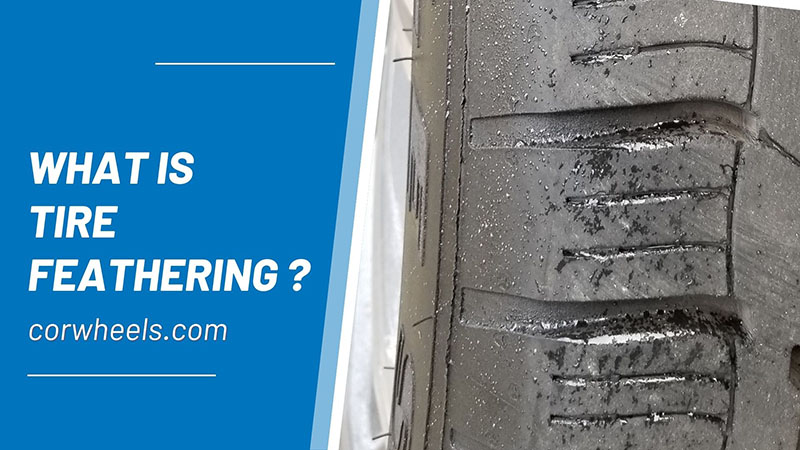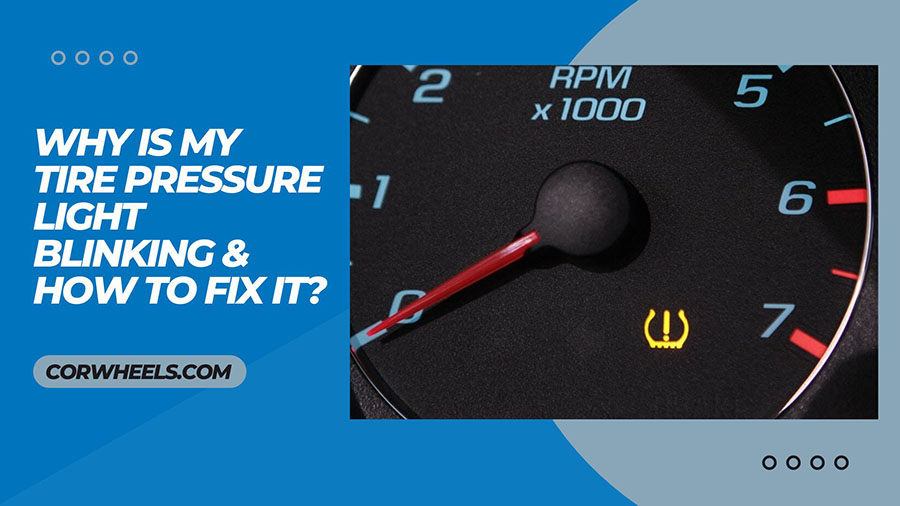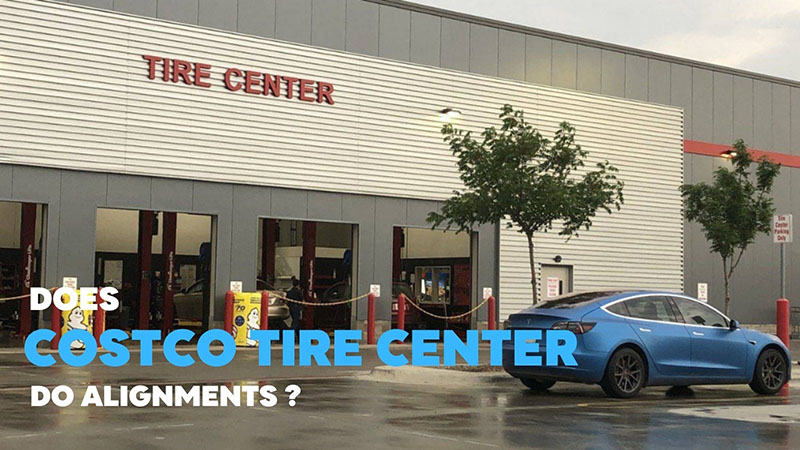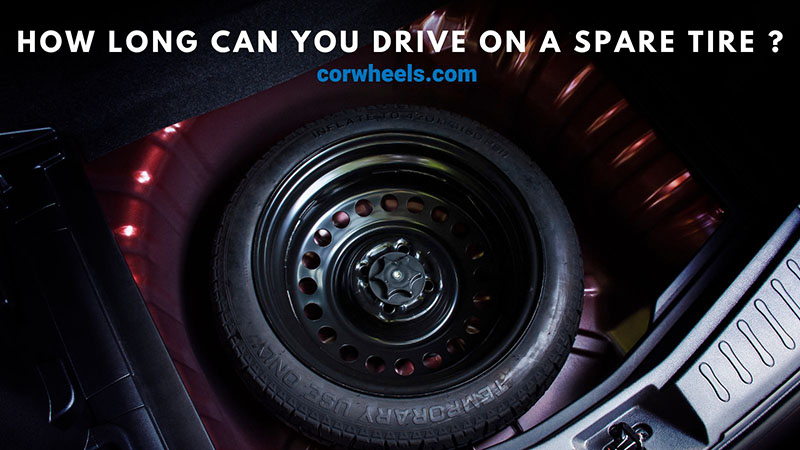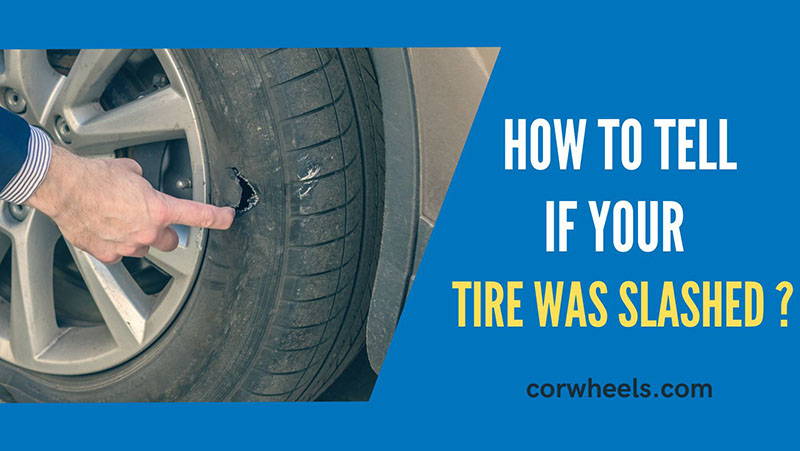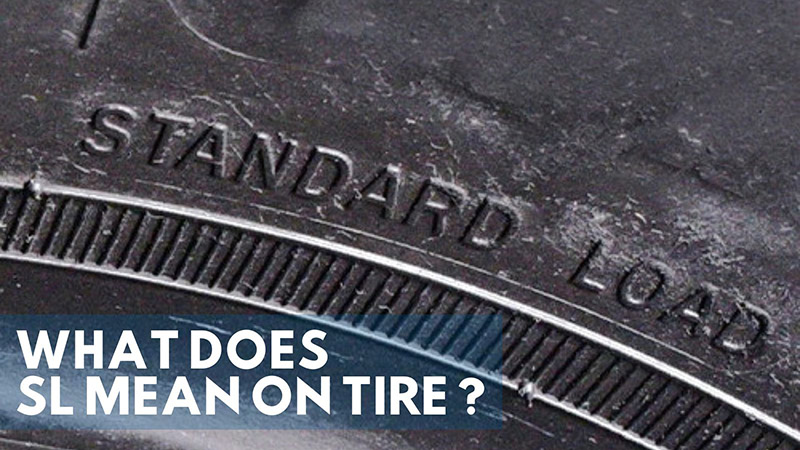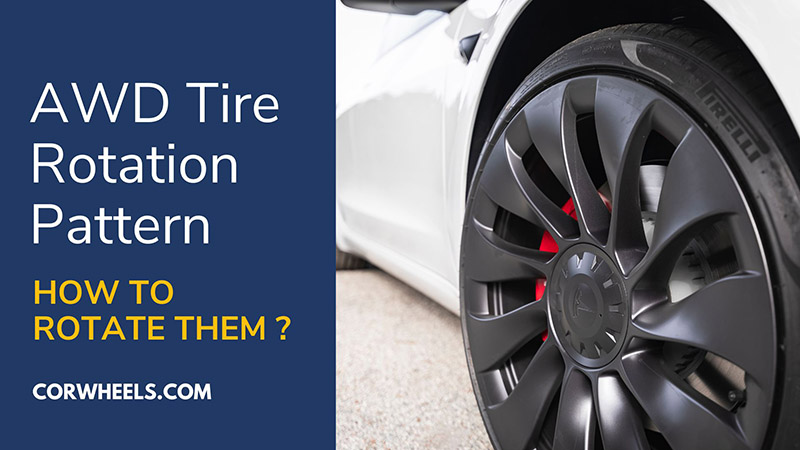Tires are not designed to last forever. Some wear out naturally after a period of use, while others reach the end of their life due to damage, such as feathered tire wear.
On the bright side, you can save your item if you watch for unusual signs of this issue. So what exactly is feathering, and what are the symptoms? Scroll down to learn.
In this article:
What Is Tire Feathering?
Feathering (or scuffing) is the wear of the treads and ribs at an angle, or one particular side wears down lower than the other side widthwise. As a result, the feathered tire has one sharper edge and one smoother.
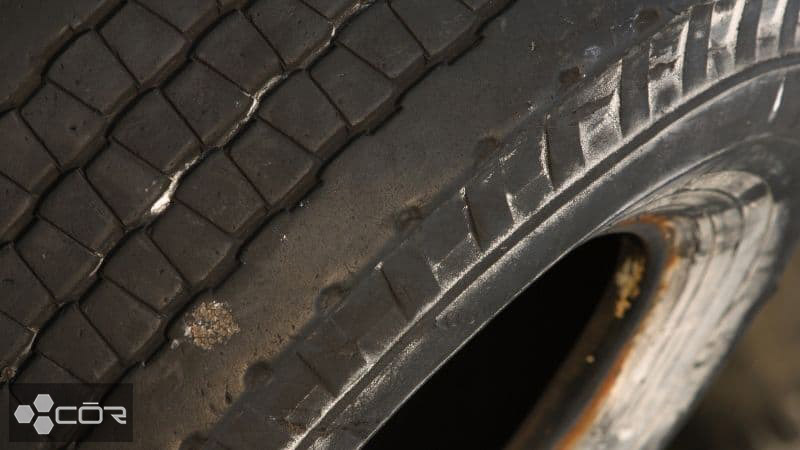
Depending on the extent of the damage, the driver may see wear on the rubber surface that looks like feathers at the edge. Simply put, tread depth is shallow or uneven compared to the original appearance. In addition to physical destruction, noticing signs of tire feathering is effortless.
The most common symptom is the unusual noise, especially at high speeds. At the same time, the driver can also feel strong vibrations from the steering wheel or the whole car when the tire suffers from feathering. Over time, damaged parts are put under excessive pressure causing blistering or cracking.
Is Feathering Dangerous?
Tire feathering can be risky due to reduced handling because the tires fail to maintain the ideal angle when in contact with the road surface. Hence, it loses proper grip and puts the driver/passengers in a life-threatening accident/hydroplaning.
Assuming your item has lateral issues, it struggles to brake, especially when cornering. Things get worse when you drive in bad weather. A worn side of the tire restricts water drainage and leads to slippage. If it bumps into a snow road, the overall loss of traction can cause it to get stuck.
Like other wear patterns, feathering leads to more serious problems if not corrected in time. When you receive the common signs of damage (noise and vibration), it may be too late – the tire already poses an accident risk.
For example, the damaged area spreads and then affects other parts. Or the delay to fix the cuffing could put more strain on and affect the steering and suspension system. Therefore, bring your car to a service center with a minor feather stain.
What Causes Tire Feathering?
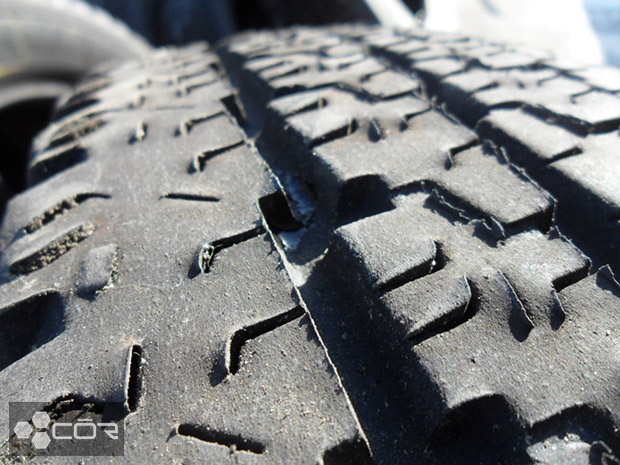
Poor wheel alignment, like excessive caster and toe, and worn-out parts in the suspension system are the most common reasons for tire feathering. Improper PSI, overloading, poor tire quality are other causes.
Bad Wheel Alignment
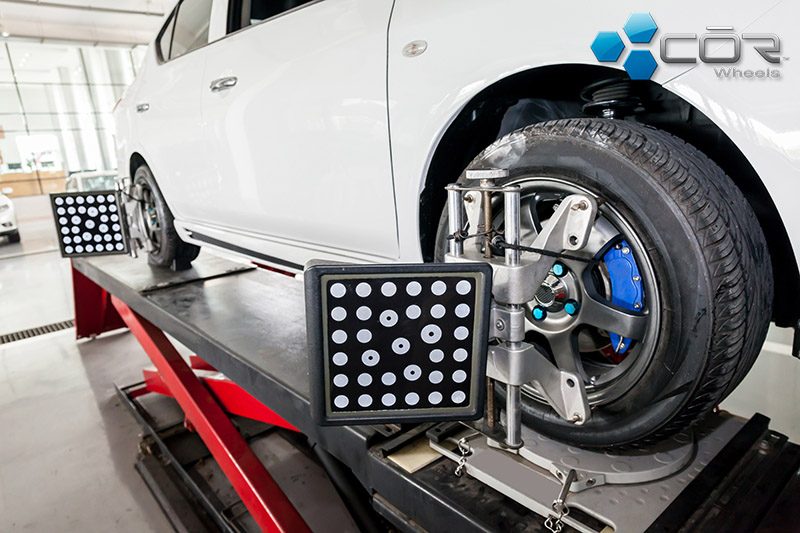
Improper alignment leads to wrong angles of the tires when they come into contact with the road surface. As a result, they wear out faster. Any deviation in these two main service measurements contributes to feathering:
- Camber: Determines the outward or inward angle of the tire when viewed from the front. If your vehicle has an excessively positive camber feature, the outer shoulder suffers more force, and vice versa.
- Toe: Indicates the angle at which the tire faces outwards or inwards during a top-down view. Toe-out on the front axle wears out the front tire on the inside, while toe-in wreaks havoc on the outside.
Note that the geometry collapses as long as the wheels undergo one of the above-mentioned technical issues. On the bright side, misalignment is easy to fix because mechanics rarely require part replacement. You just need to drive to the repair shop and wait 30 minutes to get the job done.
Poor Suspension System
Another possible cause for feathering is a faulty suspension system, such as a worn component. Case in point, a broken detail disrupts the smooth coordination of the suspension and hinders your driving experience. Experienced mechanics can solve this problem, but the remedy is only temporary.
The problem will return soon unless you replace the worn-out components. We have been in this situation so often that we checked our ball joints or bushings whenever we noticed symptoms. However, it is not a good deed. Instead, periodically replace the shocks and struts for optimal performance and safety.
Other Reasons
Overloading, improper tire pressure, substandard tire quality, or uneven roads (or sharp objects on roads) are other culprits to blame.
How To Fix Tire Feathering?
There is no way to fix it but to replace it with a new tire. The only thing you can do is trying to even out the tread wear by aligning the wheels or changing worn-out suspension parts, but that’s not 100% surefire.
To increase the chance of success, determine the cause behind the feathering first. When you go to the mechanics for this problem, you get several recommendations, such as tire rotation, wheel alignment, or suspension repair.
Older models often need more than a treatment or replacement to resolve the root fully. Here are some effective remedies based on the actual tire condition according to our real experience.
Feathering on the rear tire:
Suspension issues are often behind the feathered rear tires. Common problems include low-control arm bushing or worn ball joints.
If you experience the same situation, install new parts. However, we once had to replace the entire control arm since its design prevented bushing maintenance.
Feathering on the inside or outside edge:
As noted above, poor alignment to required specifications causes this behavior. So get your car aligned and get rid of bumpy driving. Surprisingly, some mechanics adjust the camber measurement at a slightly negative level to improve traction.
How To Prevent Tire Feathering
Regular tire maintenance is the only way to prevent feathering. What you can do yourself include:
- Monitor tire pressure monthly when the tires are cold or whenever the ambient temperature fluctuates significantly. Keep the tires properly inflated.
- Check tread depth with a specialized tool or a coin measure. Replace your tire if the result is less than 4/32 inches.
- Keep an eye on the pressure monitor panel and maintain the recommended pressure.
- Avoid overloading
- Steer clear from rugged roads or those with sharp objects as much as possible
- Invest in a high-quality tire set.
Besides, you should bring your car to a service center at least once a year. If you drive often, shorten your intervals. It is best to follow the recommended maintenance schedule for each service as below:
- Rotate and balance tires every six months or 6,000 miles
- Wheel alignment every year
- Get it repaired when you notice a problem with the suspension or a puncture.
Tire Feathering Vs. Cupping
While feathering occurs on one side of the tread along the tire width, cupping is tread wear appearing in random patches along the tread length among other less-worn tread parts.
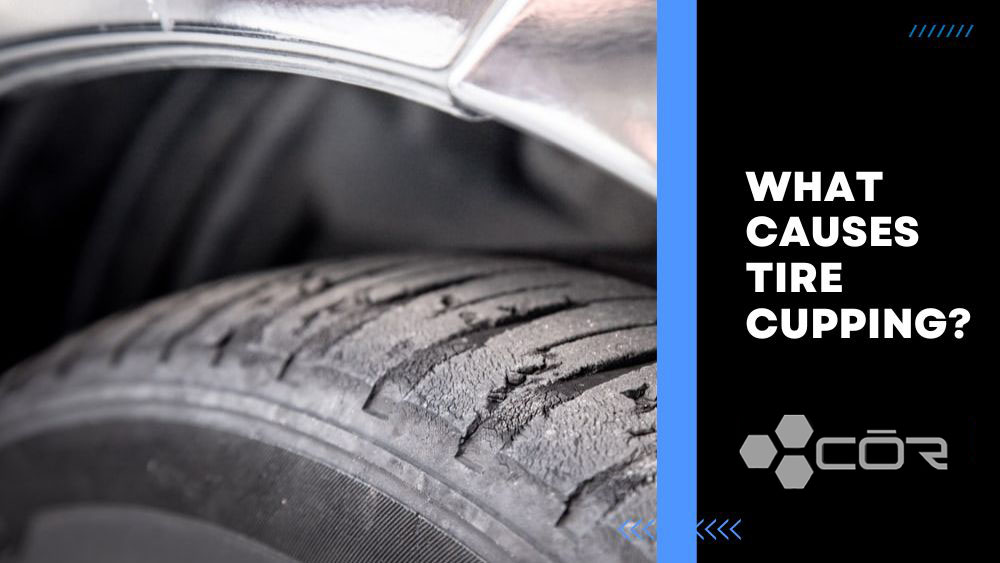
The second difference is in the causes of cupped tires. The biggest culprit of this type of wear is a bad strut or shock absorber that pushes the tire slightly up.
As a result, it does not absorb shocks properly, creating an uneven pressure build-up that eventually causes wear. Additionally, it may be due to bent wheels or poor tire quality.
FAQs
What Alignment Angle Causes Feathering?
Excessive positive/negative toe or camber angle both cause feathering.
Can Feathered Tire Cause Noise?
Yes. The tread surface is uneven, so it causes loud noise.
Can I Run On My Car With Feathered Tires?
Maybe, it depends on the actual condition of your items. However, running on a fathered tire is unsafe since the contact patch is no longer optimal.
Will Feathered Tires Smooth Out?
Maybe. As feather tires wear more, the treads become even on their own. Your timely intervention on damaged parts also brings about the same result. However, if your tire is badly damaged, it is the end.
Conclusion
Feathering tires are annoying to control, but more seriously, it implies bad damage to the suspension and wheels. One thing is for sure: it shortens the tire’s lifespan and spreads without timely detection and treatment. Hence, monitor your tires regularly and seek help when symptoms appear.

